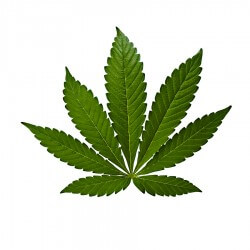
Marijuana comes from the hemp plant Cannabis sativa, contains the psychoactive chemical delta-9-tetrahydrocannabinol (THC) and, according to the National Institute on Drug Abuse, is the most common illicit drug in America. The legalization of marijuana for medicinal and even recreational purposes in many states has led to expanding its market and increasing its presence and method of use.
These days marijuana is not just smoked anymore, but it can be infused into drinks and food. The active ingredients are also distilled down into hash oil concentrate to be mixed into edibles or smoked. This recently popular form is called butane honey oil, dabs, wax, or shatter. Marijuana edibles and hash oil concentrate may be potentially more dangerous than the traditional methods of smoking the dried stems, seeds, leaves, and flowers.
Health Risks for Edibles and Alternative Marijuana Forms
In 2009, the Drug Abuse Warning Network (DAWN) reported that 376,467 people sought emergency department treatment for marijuana-related issues. When smoked, the THC crosses the blood-brain barrier rather quickly, affecting perceptions, mood, thinking, coordination, concentration, learning, and memory. Marijuana raises your heart rate and may increase the risk for cardiac arrest, while smoking it can cause respiratory issues. Marijuana is thought to lower your immune system and possibly cause permanent memory loss. High doses of marijuana may cause a more severe psychotic reaction as well, which is indicated by hallucinations and paranoia. Marijuana can also exacerbate or heighten any underlying mental illness symptoms.
Eating products containing marijuana or using “dabs” carries many of the same health risks as those related to the more traditional method of smoking it, but also some different ones. Extracting resin from marijuana for hash oil concentrate, for example, involves the use of butane, often with a blowtorch, which has injured many via explosions and fires. Hash oil concentrate, or butane honey oil, is more potent than traditional marijuana, containing concentrated THC. Since a little dab is all it takes to feel the effects, using hash oil concentrate is often considered “dabbing.” Taking dabs involves vaporizing the concentrate and then inhaling almost pure THC.
Edibles and the Body
Consuming marijuana in an edible format also changes the way your body metabolizes the THC. When you smoke it, marijuana goes straight to the brain, while eating it sends it through the bloodstream. So whatever else is in your system becomes important as well since THC may compete with other substances for absorption in the liver. As a result, consuming marijuana edibles on an empty stomach can be dangerous.
It is also harder to know what is in the form you are eating or drinking. Levels of THC can vary widely in edibles and you may never know what exactly, or how much, you are getting. The highs can last longer, with THC remaining in your system for up to eight hours. Marijuana can be infused into brownies, cookies, tea, energy drinks, candy bars, and lollipops. It may be difficult for children to know the difference between THC foods and normal ones; therefore, the risk of accidental ingestion and overdose is higher with edibles.
Signs of an Overdose
While it is generally hard to overdose on marijuana, edible or alternative forms of marijuana increase the potential overdose risk. The drug takes longer to take effect when ingested instead of smoked, for example. Users usually feel “high” within 10 minutes after smoking marijuana, while it can take up to one to three hours when ingesting it. Users may lose patience and take more, which can lead to toxic levels of the drug in the system, or an overdose.
Overdose on marijuana is not usually life-threatening. Rather severe cases typically present as an acute psychotic episode instead of being fatal, although overdose death is possible. Overdose symptoms are similar to those associated with smoked marijuana. Users may experience both physical and psychological side effects, including:
- Ataxia
- Irregular heart rate
- Impaired motor skills
- Panic attacks
- Anxiety
- Hallucinations
- Confusion
- “Out of body” feeling
- Disorientation
- Delusions
Mixing marijuana with other drugs or with alcohol may intensify its effects and potential dangerous side effects. It is also possible to become dependent on or addicted to marijuana. Marijuana affects the pleasure center in your brain, disrupting the reward pathways. Over time, chronic use can lead to tolerance, meaning it takes more and more of the drug to produce the desired euphoric and mellowing effects. Without the drug in your system, you may experience physical and psychological withdrawal symptoms, which are indicative of dependence.
If you, or your loved one, are struggling with dependence or addiction, it is time to seek help. Here at Axis, we offer a comprehensive rehabilitation facility, specializing in evidence-based and patient-centered methods. Call today.


